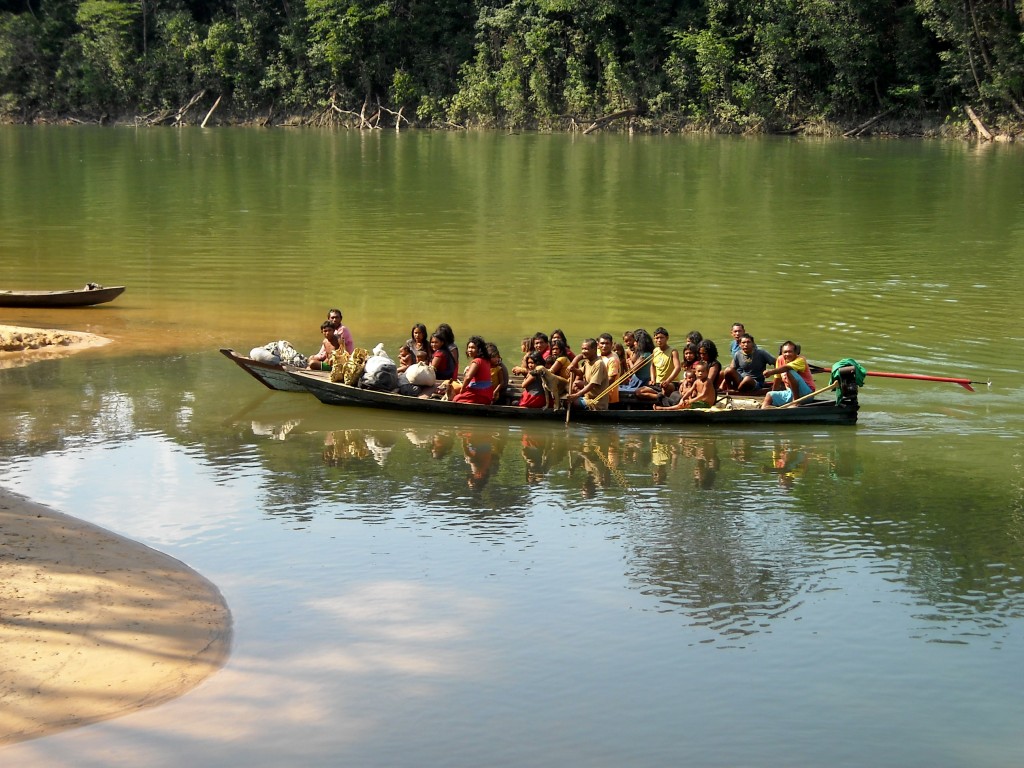I initially went to work with the Piraha people on December 10, 1977, as a member of SIL International, with the intention to translate the New Testament into their language. I translated the Gospel of Mark into their language. I helped produce a professional quality recording of that in the Piraha language. I sat with a Piraha man, Piihoatai, and would say a line from the translation. Once he understood it, he would say it with the proper intonation, etc. This took a period of several days. The final product is available here: Piraha gospel of Mark.
This did not work out very well from the missionary perspective. In fact, the effect was that I abandoned my own faith in the face of the Pirahas’ happiness, demand for evidence that I did not have, and their respect and warmth for me. I talk about all of this in detail in Don’t Sleep, There are Snakes.
The Pirahas come from the ancient Mura peoples. We don’t know much about the Muras. The other languages of this family are no longer spoken, though there are descendants of the Muras living in the Autazes region near Manaus (and they look just like the Pirahas, although they have adopted Brazilian dress, Portuguese speech, and Brazilian culture). Piraha is therefore now a language isolate – with the disappearance of these related languages (Bohura, Yahahi, Mura, and Matanawi), it is not related to any other known language living and no other known language of the past, outside of this no longer spoken group. The Mura groups inhabited the banks of the Madeira River, except for the Pirahas, who took up residence along the Marmelos River, a tributary of the Madeira. Eventually, they began living more, and now exclusively, on the Maici River, a tributary of the Marmelos. They were known for being ferocious fighters and brilliant at ambush.

In the early 1900s, around 1918-1920 or so, the now-defunct Brazilian Indian Protection Service (SPI) established a post among the Pirahas. Around this time they were also visited by Kurt Unkel (Nimuendaju), the father of Brazilian anthropology – a Leipzig University-trained German anthropologist who visited almost every known indigenous group of Brazil in his lifetime.
The Mura peoples were contacted by Catholic missionaries in the 1700s, but no converts seem to have been produced and they were abandoned by missionaries until 1959, when SIL International missionary, Arlo Heinrichs and his family, joined them. Arlo learned the language and translated portions of the Bible. He left in 1967 to become the director of SIL in Brazil. (Arlo still speaks a good bit of the language.) He was replaced by Steve Sheldon and his family that same year. Steve also learned the language, very well, and published on the grammar of the language and also translated portions of the Bible. In 1976, Steve left the Pirahas to take up Arlo’s job as the Director of SIL in Brazil. I received a letter in early 1977 asking if I would be willing to become the third SIL missionary among the Pirahas. Steve told me that no one else had been able to really “crack the language” and that for this reason he didn’t trust their translations.
The Pirahas had, early on in their life along the Marmelos and the Maici, become mainly hunter-gatherers. Even today, I would estimate that 75-90% of their diet is from hunting and gathering. They are planting small manioc fields. I understand that it was Steve Sheldon who got them to do this. Manioc and manioc flour (a main staple of many Amazonian groups) are not indigenous to the Pirahas and one can see this in their small fields, miniscule production, and poor tool-making for manioc straining, etc. The Brazilian Indian Foundation (FUNAI) does seem to be encouraging two Piraha villages (Forquilha Grande and Piquia) to increase manioc production, but I am not sure how successful they are.
The Piraha culture is under greater pressure to change than at any points since 1918. The FUNAI believes that it should help Piraha folks collect their retirement (Brazil pays anyone over retirement age a monthly income beginning around 200-300 per month, US), but the trips to town to be paid are disruptive to them and subject those who escort them to extreme financial temptation, since the Pirahas do not count and have no idea how much money they should receive, etc.
I have no plans for further long-term field research among the Pirahas. I have lived with them longer than just about anyone outside of missionaries has ever lived among an Amazonian tribe.
But there are many plans for publication and making available the hundreds of hours of texts I have recorded and transcribed and for analysis of the rich and extensive data I have collected over the years. Stay tuned.